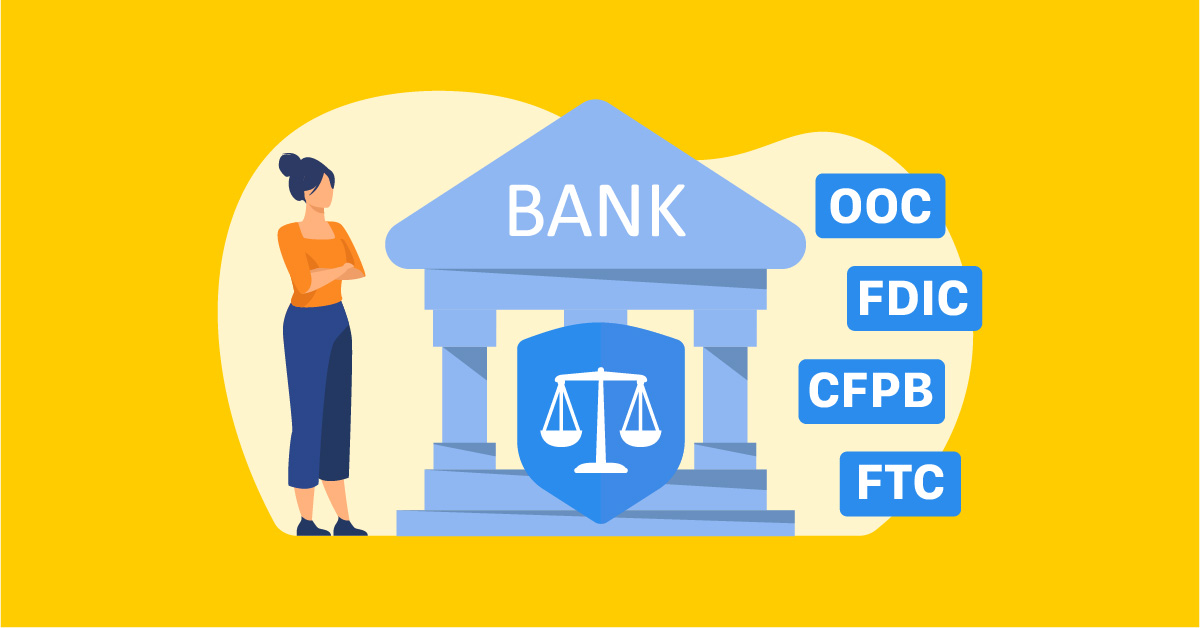Why Banks Can’t Risk Manual Marketing Compliance in Today’s Regulatory Environment

This article was originally published May 13, 2024 on Banking Dive
The tech explosion of the past decade has completely changed the digital financial services landscape, accelerating the dissemination of marketing content and triggering new levels of regulatory scrutiny for banks. The rapid shift has made staying ahead of these complex changes increasingly difficult, particularly for those in charge of marketing compliance.
New rules and heightened consumer protection oversight from federal regulatory agencies, such as the FTC, OCC, FDIC and CFPB, create significant challenges for already stretched marketing and compliance teams.
While still pending, the CFPB’s contested late fee rule could require all major credit card issuers to update their marketing materials, disclosures and Schumer boxes to reflect these changes. Also of note, the FDIC finalized its updated advertisement rule to clarify insurance disclosure requirements across all banking channels—including digital websites, landing pages and mobile applications—that banks must now comply with.
In today’s rapidly shifting tech and regulatory environment, banks can no longer afford to rely on manual processes to review, monitor and document marketing campaign changes. Embracing proactive marketing compliance technology as an efficient and comprehensive first-line of defense solution to solve these pain points is a top priority for astute banks.
The Manual State of Marketing Compliance
Most banks use an omni-channel marketing approach, utilizing channels like the web, social media, emails and direct mail to market to consumers. Compliance can often lag behind in their processes to ensure omni-channel oversight across those same channels.
Efficiently ensuring regulatory and brand compliance across all marketing is table stakes for banks to support and scale growth and partnerships.
Yet, research indicates that 48% of organizations monitor their marketing materials only monthly, quarterly or yearly. On top of that, most organizations are using multiple marketing channels, but 43% say they lack complete monitoring across all of these channels, leaving the door open to unmitigated risk.
The Marketing Compliance Technology Standard
An analysis of recent marketing compliance and enforcement actions shows the financial impact and consumer harm from non-compliance. In Q1 alone, federal and state regulators finalized 17 enforcement actions against consumer finance companies, totaling over $59.6 million in monetary fines, with the largest fine being $19 million for deceptive practices.
Key enforcement action themes include a focus on UDAAP and dark patterns, specifically regarding misleading “free” and “instant” offers on marketing materials.
The FTC has taken enforcement actions against three companies that made false claims about their products or services being “free” or “instant.” Similarly, the CFPB published a circular that highlighted deceptive marketing practices involving terms like “free” or “no fees.”
As banks’ compliance needs are increasing, so is the internal pressure to do more with less to maintain budgets under already tight margins. Bank partnerships have come under intense scrutiny lately, and having tools to manage comprehensive compliance and efficient oversight of these partners has become vital.
Automating marketing compliance levels the playing field, helping banks proactively oversee their fintech partners by removing the heavy human toll of painstakingly finding and analyzing each piece of marketing material.
Organizations that utilize compliance monitoring technology for that oversight have seen significant results. One bank reduced its document compliance review time by 90%, allowing materials to be reviewed, approved and live within just 24 hours. Another bank was able to gain complete compliance oversight of their 200+ fintech partners across the web and social media.
A Prime Case for Automated Marketing Compliance: Prime Rate Changes
One of the more challenging tasks for a bank marketing team is reacting to rate changes or new regulatory rules when they arise like the CFPB’s $8 late fee rule.
Events like those can require updates to APRs, fees, images, disclosures and more, often within a short time frame. This means that marketing managers typically must manually find, review, approve and monitor all assets across all channels, including partners and their affiliates—a tough job for a human but a perfect use case for what marketing compliance technology does efficiently and comprehensively.
During the last rate change, one bank was able to identify and update outdated interest rates across partners within just 48 hours—a feat that wouldn’t have been possible without compliance technology.
Staying Ahead of Bank Marketing Compliance Risk
The ability to adapt as a bank’s risk thresholds change or their partners’ needs evolve is critical to a bank’s growth potential. Using marketing compliance technology to ensure the first line of defense is fortified, agile and able to identify and remediate noncompliance issues quickly before they have the chance to become more chronic is the way banks will stay ahead of the digital evolution.
“The case for bank marketing compliance automation is a win-win for banks looking to establish nimble compliance programs that proactively protect their organizations, their partners and their trust with customers,” says Paul Wilmore, PerformLine COO.
PerformLine helps banks transform manual review to AI-powered marketing compliance oversight across consumer channels for comprehensive coverage, compliant growth and total efficiency.


